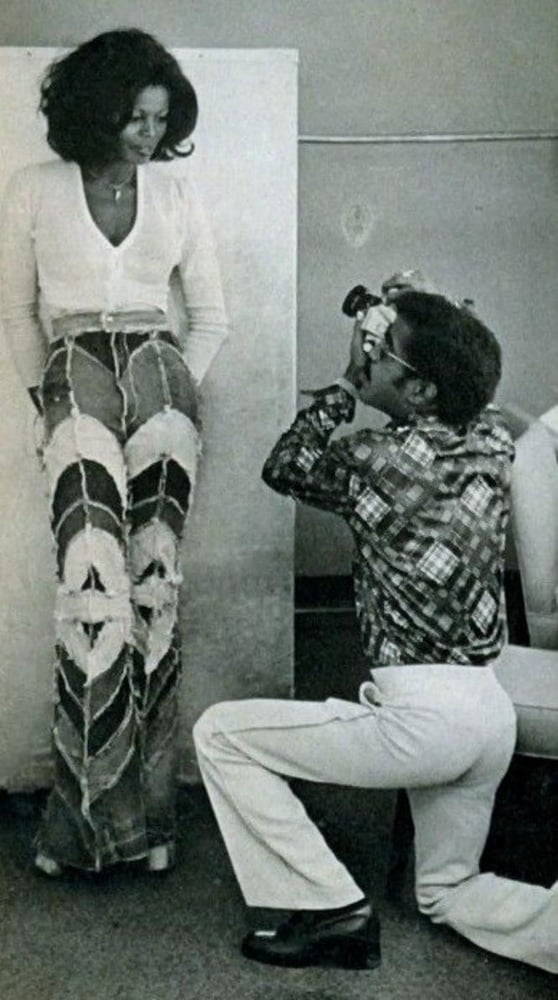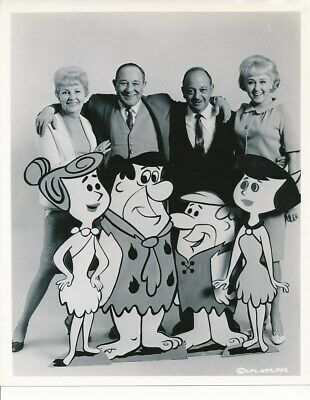You are using an out of date browser. It may not display this or other websites correctly.
You should upgrade or use an alternative browser.
You should upgrade or use an alternative browser.
Rare and very interesting photos
- Thread starter Alumni
- Start date
This photo by Ernest Cole shows us what life was like during Apartheid in South Africa. Finding the unmarked trains designated for blacks involved guesswork.Passengers had to jump across tracks, and some were killed by express trains Ernest Cole was born in South Africa in 1940 and received his first camera as a gift from a clergyman. He worked as a photojournalist and on his own initiative Cole undertook a comprehensive photographic essay in which he showed what it meant to be black under apartheid.
Cole was only in his 20's when he took the photos which were set in the 1950's and 1960's. He risked his life and freedom to take the photos. Cole had himself classified as "a coloured" under South African laws so he could own a camera and move around taking photographs . By pretending to be an orphan Cole managed to persuade apartheid bureaucrats to reclassify him as colored, or mixed race, despite his dark skin. His fluency in Afrikaans, the language of most coloreds, helped. His ability to pass as colored freed him from laws that required blacks always to carry a work permit when in “white areas,” and this mobility proved crucial to his photography. He went into exile in 1966, and smuggled his photos out of South Africa. The photos were published in the United States in a book, “House of Bondage,” in 1967, with the result that in 1968, Cole was banned from South Africa and settled in the United States.
He never returned to South Africa. The photographs caused an international furor at the time and unsurprisingly were banned in South Africa, where both Cole and his work were little known until recently. Cole died in exile in New York in 1990 aged 49, the week after Nelson Mandela was released from prison. He was homeless, destitute and penniless, and without even a camera. His work was largely unseen and unknown inside South Africa.

Cole was only in his 20's when he took the photos which were set in the 1950's and 1960's. He risked his life and freedom to take the photos. Cole had himself classified as "a coloured" under South African laws so he could own a camera and move around taking photographs . By pretending to be an orphan Cole managed to persuade apartheid bureaucrats to reclassify him as colored, or mixed race, despite his dark skin. His fluency in Afrikaans, the language of most coloreds, helped. His ability to pass as colored freed him from laws that required blacks always to carry a work permit when in “white areas,” and this mobility proved crucial to his photography. He went into exile in 1966, and smuggled his photos out of South Africa. The photos were published in the United States in a book, “House of Bondage,” in 1967, with the result that in 1968, Cole was banned from South Africa and settled in the United States.
He never returned to South Africa. The photographs caused an international furor at the time and unsurprisingly were banned in South Africa, where both Cole and his work were little known until recently. Cole died in exile in New York in 1990 aged 49, the week after Nelson Mandela was released from prison. He was homeless, destitute and penniless, and without even a camera. His work was largely unseen and unknown inside South Africa.

The female bites the scrotum of the male lion when the male is tired of copulation. A lioness can mate up to 20 to 40 times a day


Godzilla made of tires...crazy


Fastest running shoes ever, Usain Bolt's


Homie looks defeated like a MoFo...The female bites the scrotum of the male lion when the male is tired of copulation. A lioness can mate up to 20 to 40 times a day


What a cyclist's legs look like after the Tour de France


July 27, 1919, the Chicago race riots began in reaction to the death of a black youth who was stoned and died after swimming into an area reserved for whites only on the shores of Lake Michigan. The police declined to arrest the white man who black observers held responsible for the incident. Indignant crowds gathered on the beach, and fights eventually broke out between black and white mobs. Violence escalated, and by the time the riots ended on August 3rd, 23 black people and 15 white people had been killed. Thousands of black families lost their homes due to arson. The Chicago race riots were the most severe of dozens of race riots that occurred after World War I throughout the United States in the summer of 1919, which became known as the “Red Summer.


Frederick Patterson Standing Beside a Patterson-Greenfield Automobile Chassis, 1915. Frederick Douglas Patterson was an American entrepreneur known for the Greenfield-Patterson automobile of 1915, built in Ohio. He later converted his business to the Greenfield Bus Body Company. While in college at Ohio State University, he was the first African American to play on its football team. He returned to Greenfield to join his father in his carriage business, which became C.R. Patterson and Sons. The younger man saw opportunity in the new horseless carriages, and converted the company in the early 1900s to manufacture automobiles, making 150 of them. Later he shifted to making buses and trucks, and renamed his company as Greenfield Bus Body Company. After Patterson's death in 1932, his son kept the business going through much of the Great Depression, finally closing it in 1939.


A young boy squats and strains to follow a lesson in the heat of packed classroom. South Africa late 1970's.


This is beautifulA young boy squats and strains to follow a lesson in the heat of packed classroom. South Africa late 1970's.

a child will always want to learn
Muhammad Ali with his winnings in 1964


Cakewalking into the weekend like this stereograph featured in the Pan American Exposition of 1901. The cakewalk was created by enslaved Africans in America who were countering harsh conditions with joy and laughter (by mocking their oppressors). In spite of everything going on, this is a loving reminder from those that came before to keep finding or creating your joy.


Riding out circa 1912, world famous cowboy Jesse Stahl riding a horse named Glass Eye. True to form, the judges of one notable competition slighted him with a second place rank when he’d clearly outperformed the competition. He countered by riding his horse backwards, further proving their bias ranking. Be great, with or without recognition from “the system”.




Peace be still circa late 1800s, servitude at the Dean Hall Plantation, Berkeley Co, South Carolina. As a reminder, what we’re seeing, feeling, and fighting for in this current moment has been centuries in the making. Her story is so important. The plantation’s old rice fields are the current site of something called ‘Cypress Gardens’.




c 1906, group portrait of Madame Sperber and her staff of “parlor girls,” Junction City, Kansas


Scavengers Face-off...


That vulture is done.Scavengers Face-off...


It was July, 1853, and George Crum was working as a chef at Cary Moon’s Lakehouse, an upscale restaurant in Saratoga Springs that catered to wealthy Manhattan families building summer escapes upstate. One of his customers sent back his French fries because they were thick and soggy (h/t NYT). After the man (who is rumored to have been Commodore Cornelius Vanderbilt, though this can’t be confirmed) sent back a second batch of the fried potatoes, Crum decided to get even, a decision that would land him a place in culinary history.

On that July day, frustrated by the difficult customer, Crum sliced potatoes very thin, fried them to a crisp in grease, and poured salt all over them, producing what he thought was an inedible riff on the French fry. But his guest loved the “potato crunches,” as Crum originally dubbed them, and before long other diners were requesting them and they made their way to the Lakehouse’s menu as Saratoga Chips.
Another example of a gifted brutha making some cac rich than a mf without any credit or even a mention.
It was July, 1853, and George Crum was working as a chef at Cary Moon’s Lakehouse, an upscale restaurant in Saratoga Springs that catered to wealthy Manhattan families building summer escapes upstate. One of his customers sent back his French fries because they were thick and soggy (h/t NYT). After the man (who is rumored to have been Commodore Cornelius Vanderbilt, though this can’t be confirmed) sent back a second batch of the fried potatoes, Crum decided to get even, a decision that would land him a place in culinary history.

On that July day, frustrated by the difficult customer, Crum sliced potatoes very thin, fried them to a crisp in grease, and poured salt all over them, producing what he thought was an inedible riff on the French fry. But his guest loved the “potato crunches,” as Crum originally dubbed them, and before long other diners were requesting them and they made their way to the Lakehouse’s menu as Saratoga Chips.
In 1968 Linda Lyndell, cut the tune "What a Man"; this song reached #50 on the Billboard R&B charts.In 1993, rap group Salt-n-Pepa sampled "What a Man" for their hit single "Whatta Man", which was a massive hit.
https://en.wikipedia.org/wiki/Linda_Lyndell
Maude E. Callen was born in Quincy, Florida in 1898. She had many siblings and was orphaned at age six. Callan was raised by her uncle, a physician in Florida, and became a devoted nurse. She served as a nurse-midwife in the Lowcountry of South Carolina for more than 60 years. Callen graduated from Florida A&M College and went on to the Tuskegee Institute for nursing coursework.
In 1923, she was called as an Episcopal missionary nurse and set up a practice as a nurse-midwife in poverty-stricken Pineville, South Carolina. At the time, there were only nine nurse-midwives in South Carolina, and in her lifetime she delivered more than 600 babies. She also instructed other women on midwifery in the Pineville community and attended to thousands of patients in the area, most of whom were African American and poor. In 1936, Callen became a public health nurse with the Berkeley County Health Department.
She continued training young black women as midwives and taught them about prenatal care, labor support, delivery and newborn babies. Life magazine published a photo essay of Callen’s work in 1951, and as a result, readers donated thousands of dollars to support her work in Pineville. She used the donations to open the Maude E. Callen Clinic in 1953, which she ran until she retired in 1971.

In 1923, she was called as an Episcopal missionary nurse and set up a practice as a nurse-midwife in poverty-stricken Pineville, South Carolina. At the time, there were only nine nurse-midwives in South Carolina, and in her lifetime she delivered more than 600 babies. She also instructed other women on midwifery in the Pineville community and attended to thousands of patients in the area, most of whom were African American and poor. In 1936, Callen became a public health nurse with the Berkeley County Health Department.
She continued training young black women as midwives and taught them about prenatal care, labor support, delivery and newborn babies. Life magazine published a photo essay of Callen’s work in 1951, and as a result, readers donated thousands of dollars to support her work in Pineville. She used the donations to open the Maude E. Callen Clinic in 1953, which she ran until she retired in 1971.

Saundra Brown, the first black woman on the Oakland police force, gets instructions on how to shoot a shotgun, 1970. Born in Oakland, California, Saundra Brown Armstrong received an A.A. from Merritt College in 1967 and a B.A. from California State University, Fresno in 1969. She was a police officer in the Oakland Police Department from 1970 to 1977. She then received a J.D. from the University of San Francisco School of Law in 1977.
She was a Judicial extern, California Court of Appeals in 1977, and was a deputy district attorney in Alameda County, California from 1978 to 1979 and from 1980 to 1982. From 1979 to 1980, she was a senior consultant to the California Assembly Committee on Criminal Justice. On April 25, 1991, Armstrong was nominated by President George H. W. Bush to a seat on the United States District Court for the Northern District of California vacated by William A. Ingram.
She was confirmed by the United States Senate on June 14, 1991, and received her commission on June 18, 1991. She assumed senior status on March 23, 2012.

She was a Judicial extern, California Court of Appeals in 1977, and was a deputy district attorney in Alameda County, California from 1978 to 1979 and from 1980 to 1982. From 1979 to 1980, she was a senior consultant to the California Assembly Committee on Criminal Justice. On April 25, 1991, Armstrong was nominated by President George H. W. Bush to a seat on the United States District Court for the Northern District of California vacated by William A. Ingram.
She was confirmed by the United States Senate on June 14, 1991, and received her commission on June 18, 1991. She assumed senior status on March 23, 2012.

He was born a slave in 1812 but eventually got he's freedom and after the civil war he started a town named kincheonville (named after him, thomas kincheon) for free black people but not only for black people. It also had anglo and mexican settlers and the land was around 300 acres.

From the wikipedia:
Momulu Massaquoi was a Liberian politician, diplomat, and monarch of the Vai tribe of Sierra Leone and Liberia. He served as Liberia's consul general to Germany 1922–1930, and appears to be the first indigenous African diplomat to modern Europe.
Momulu Massaquoi was a Liberian politician, diplomat, and monarch of the Vai tribe of Sierra Leone and Liberia. He served as Liberia's consul general to Germany 1922–1930, and appears to be the first indigenous African diplomat to modern Europe.



